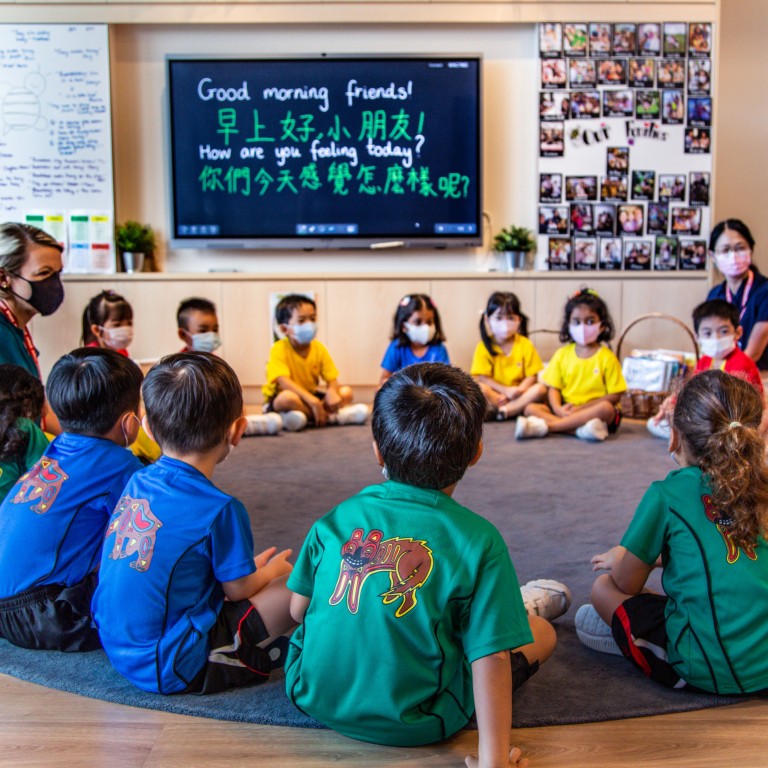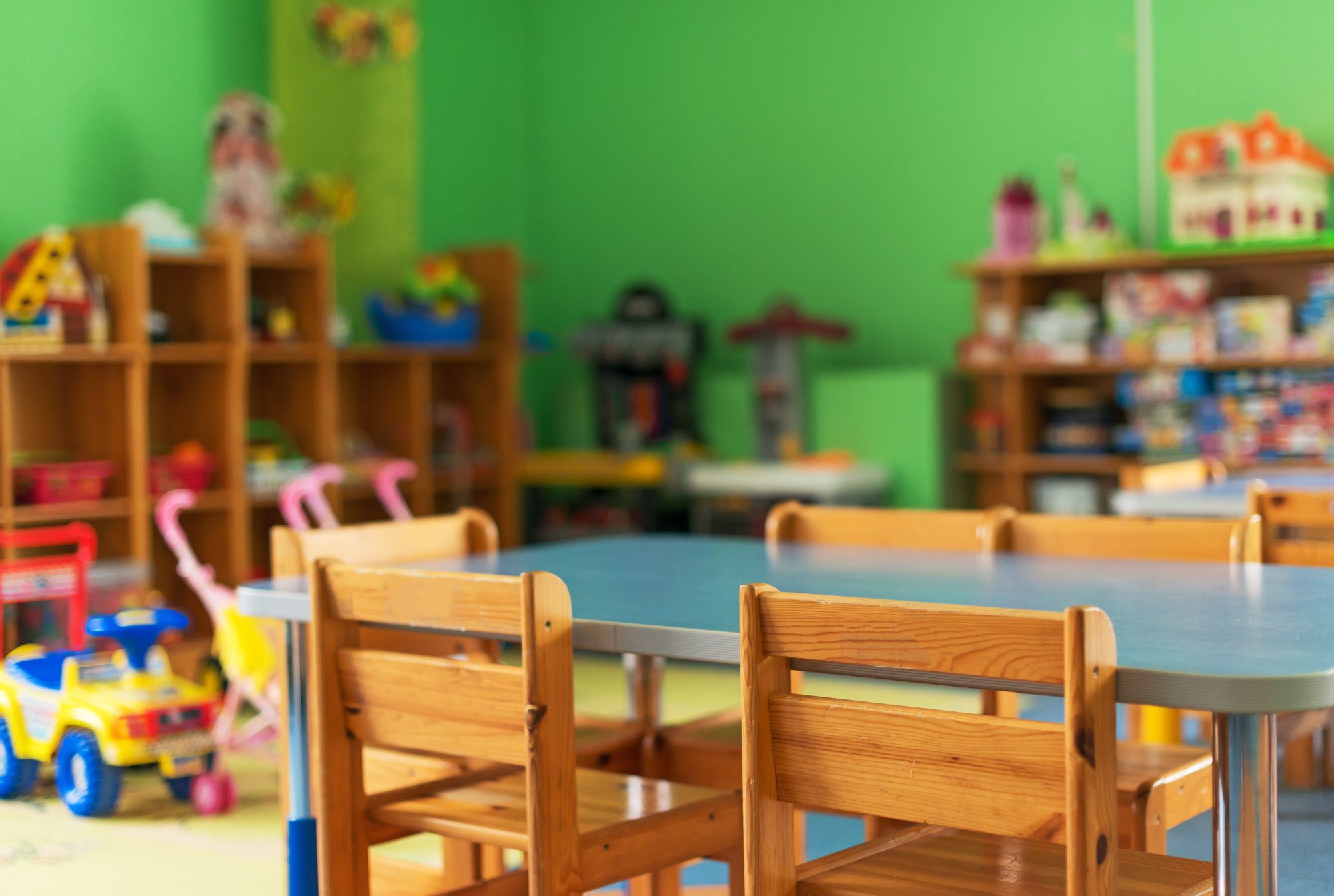
Hong Kong’s student body continues to shrink and get more local – declining birth rate and emigration fuel further falls in enrolment while demand picks up for instruction in Mandarin
- Anfield International Kindergarten in Kowloon Tong is just one of many kindergartens reporting ‘under-enrolment’ due to emigration
- Invictus School and Canadian International talk about shifting demographics with fewer expats and more locals, who want international curricula and courses like robotics and coding
Hong Kong’s birth rate has been declining for decades, putting stress on schools. Fewer births mean fewer students, which means less government funding, classes being cut and, in the worst-case scenario, school closures.
This isn’t a new problem. In 2005, then Secretary for Education and Manpower, Professor Arthur Li was already proposing government measures to help secondary schools tackle problems arising from “under-enrolment”.
This long-standing problem has become more acute in recent years, though, and is impacting lower down the education pyramid. Hong Kong’s recent spike in emigration is starting to put the future of some of the city’s kindergartens in doubt.
A study released in January by the Hong Kong Federation of Education Workers found that about 10 per cent of the city’s kindergartens are at risk of closure due to residents leaving the city, in addition to the already low birth rate.

Many more kindergartens are already feeling the pressure. Anfield International Kindergarten in Kowloon Tong reports lower enrolment numbers, ever since the early days of the Covid-19 pandemic.
“Parents were hesitant to have their children participate in any e-learning programme and even when school temporarily reopened, they were fearful of sudden closures or risks to their child’s health,” says Christina Pickford, head of school at Anfield International Kindergarten, who points out that as enrolment in kindergarten-level education is not mandatory in Hong Kong, parents felt no pressure to send their children to school during this period.
Even though the current year is the first full academic year without any Covid-related school closures, enrolment numbers are still low.
“Many overseas families decided not to return to Hong Kong due to the government’s travel restrictions over the past three years,” says Pickford. “Another unexpected factor which has affected our enrolment is the increasing number of parents deciding to emigrate to other countries since the last academic year 2021-22. We’ve been lucky to keep all our classes open, but class sizes are still lower than our pre-pandemic numbers.”
Admissions for the 2023-24 academic year are affected, too.
“As there are fewer children in Hong Kong, we have had fewer children applying for places than in previous years, as with all schools throughout Hong Kong. Schools are actively trying to get these children into their schools so it’s quite competitive,” she says.

Invictus School Hong Kong in Tseung Kwan O has also felt the impact of emigration. The kindergarten opened in 2019, and reports that while enrolment showed a 50 per cent increase each year since opening, for the academic year starting August 2022, the numbers have been the lowest so far. However, since Covid restrictions were eased earlier this year, numbers have improved again, with enrolment for the coming academic year up 10 per cent by February.
Shifting demographics
Principal Fiona Chan says that there has been a noticeable shift in demographics. In previous years, the school had many nationalities, including Europeans, American, Australian, Korean, Japanese and Russian families. This year there are far less expatriate families, with more Hongkongers and mainland students, especially from Beijing and Shanghai. The local parents who have chosen to stay in Hong Kong are looking for international curricula and approaches.
As the student demographic has changed, so must schools, says Chan. “We provide education, but we run the school like a business, as if families are our customers, and so we must change to accommodate their needs,” she says. “We design activities more in line with their expectations, and we’ve changed our communication strategy – we find that local parents want to be kept up to date with their children’s daily progress, whereas our expat parents tended to require less day-to-day communication from our side.”
One request many kindergartens in Hong Kong are hearing is for Mandarin Chinese classes. The Canadian International School of Hong Kong (CDNIS) recently introduced a bilingual programme in its lower school, with class time divided equally between English and Mandarin Chinese instruction.
We have had fewer children applying for places than in previous years, as with all schools throughout Hong Kong
Lief Erickson, lower school principal at CDNIS, says they added the dual-language option as there was a growing demand for a strong foundation in Mandarin Chinese from their parent community, and from graduates about to head to university or into the workforce.” Having a strong foundation in Chinese opens more doors. It’s also the right time to learn the language when you’re younger,” says Erickson.
The school is one of few in Hong Kong to report that they have not seen a decline in admissions applications over the past few years. Erikson attributes this to offering programmes and opportunities focused on preparing students for the future.
“When parents apply to our school, they are not just considering our kindergarten, they are looking long term and considering how CDNIS may support their child throughout their educational journey, from Early Years to graduation. In fact, in any given year, anywhere from a quarter to a third of our graduates have been enrolled at CDNIS since kindergarten [13 years or more],” says Erickson.
“The world is changing quickly and Hong Kong is no exception. This is why the school’s strategic initiatives have been focused on preparing our students for a dynamic future.”
Different subjects, greater focus
Some of these school-wide initiatives include enhancing their robotics and coding programmes with the introduction of underwater robots, and hosting internationally recognised street artist and muralist, Jo Di Bona, to spray paint a large mural in the school lobby that students can watch over the course of 10 days.
“The education market here in Hong Kong is certainly competitive and this is why CDNIS is always looking to provide unique learning experiences and opportunities, not just for our kindergarten students, but all students from Early Years to Grade 12,” says Erickson.
Another way that kindergartens have adapted to recent circumstances is by strengthening their focus on the personal, social and emotional development of students. The Covid-19 pandemic has had significant impacts on early childhood education, including negative impacts in social, emotional and behavioural development, mental health, physical development and school readiness.
“Because of the small class size, we have made use of this opportunity to provide more focused support and interventions for children’s development,” says Pickford.
Anfield International Kindergarten now includes time allocated for daily mindfulness sessions and has increased the parent-teacher communication for each child.
“Anfield’s openness and family focus has been a long-standing tradition for our schools since we opened in 1999, and we have now further focused our curriculum on the personal, social, emotional development of our students in every area of learning,” says Pickford.
“We have also placed concentrated importance on students’ communication and language development. We’re building back the foundations of Early Years students to prepare them for their school lives.”

While little can be done by schools in the face of Hong Kong’s low birth rate, many kindergartens are convinced that to weather the recent drop in student numbers, standards of education and care must remain high.
“If you offer a high quality of programme and care about your students, parents will come,” says Chan. “New students are joining already, and I believe more people will come back to Hong Kong in the next few years. The city is more stable again now and has lots of opportunities. I’m very positive about Hong Kong’s educational outlook.”
Pickford is also hopeful, although adds that it may be a while before enrolment numbers are back up to former levels.
“It will take time to recover the lost number of international families in Hong Kong, and the impact of the low birth rate, we believe, is a difficult experience for all schools throughout Hong Kong,” she says.
“Hong Kong continues to be an international destination that has many things to be recognised and celebrated for. We are hopeful this is a short-term impact and are looking forward to a brighter future for our young generation.”

